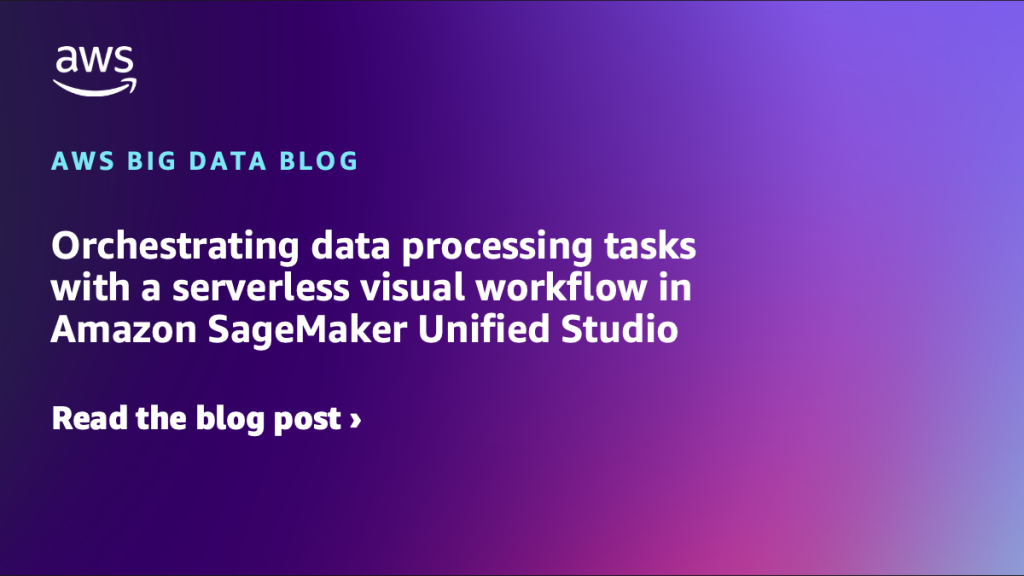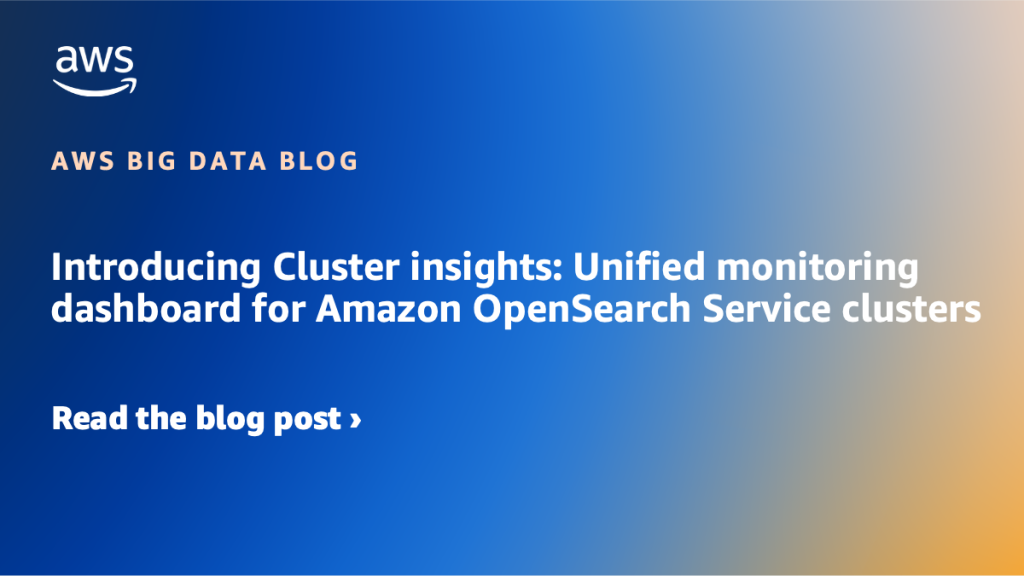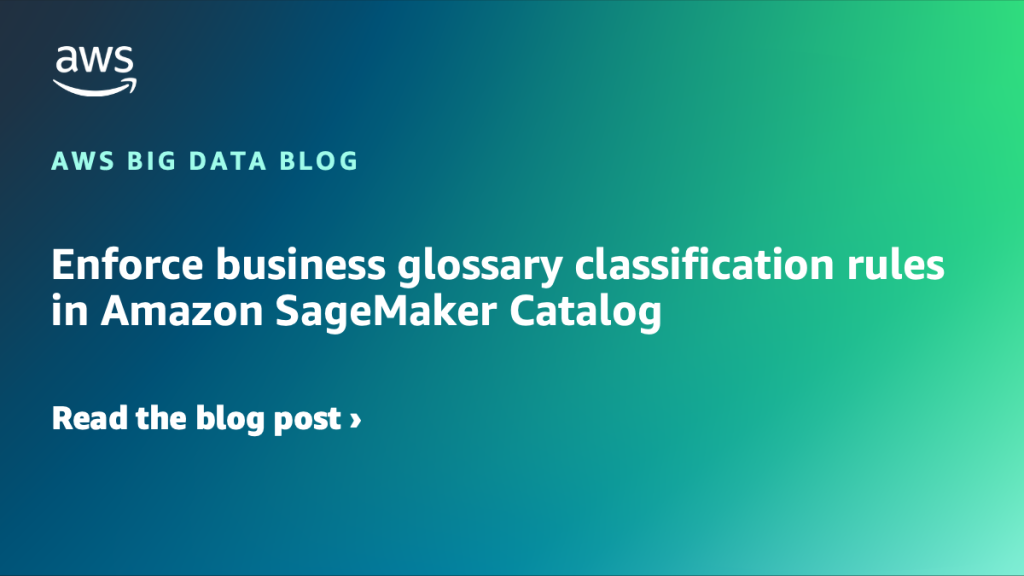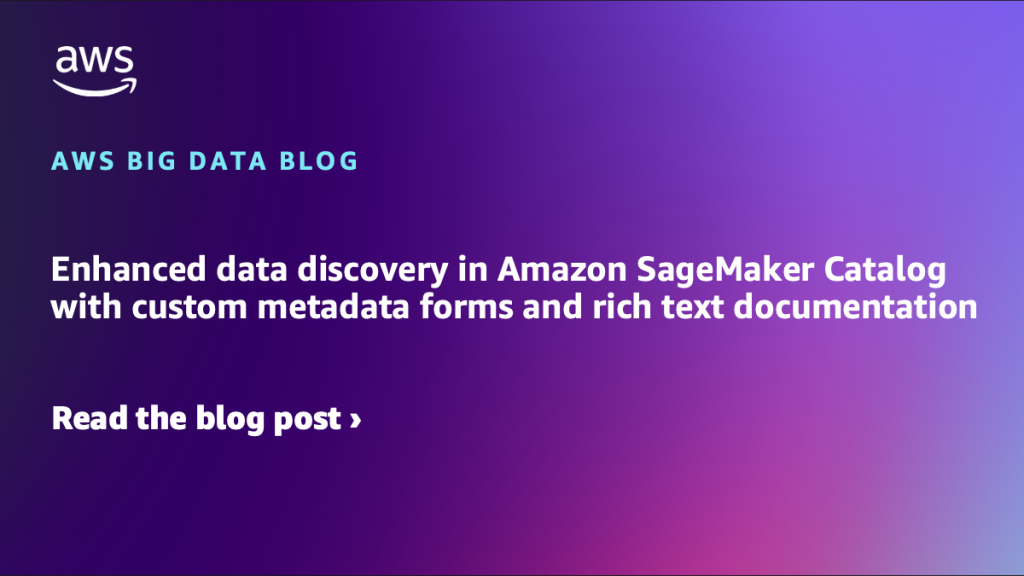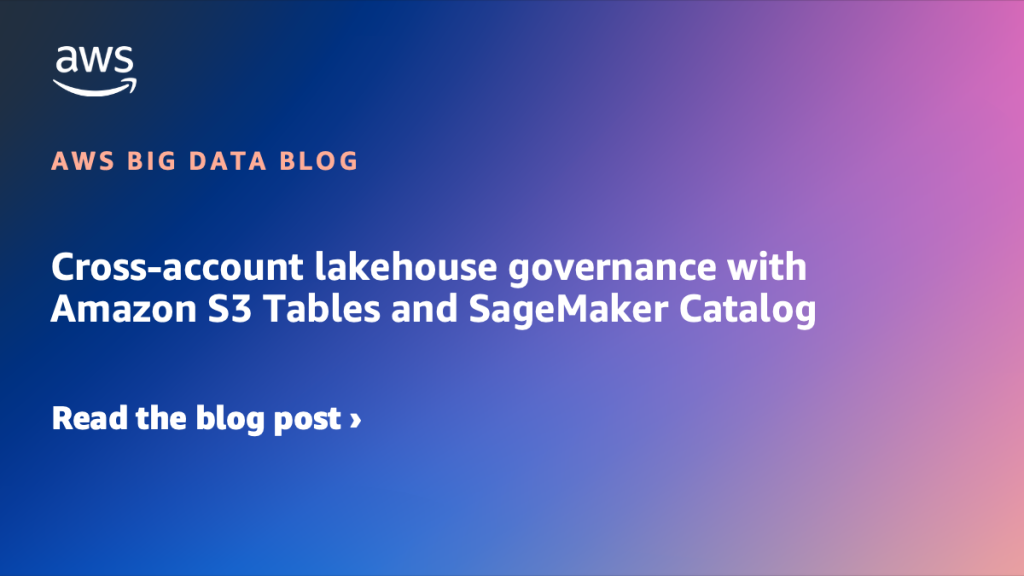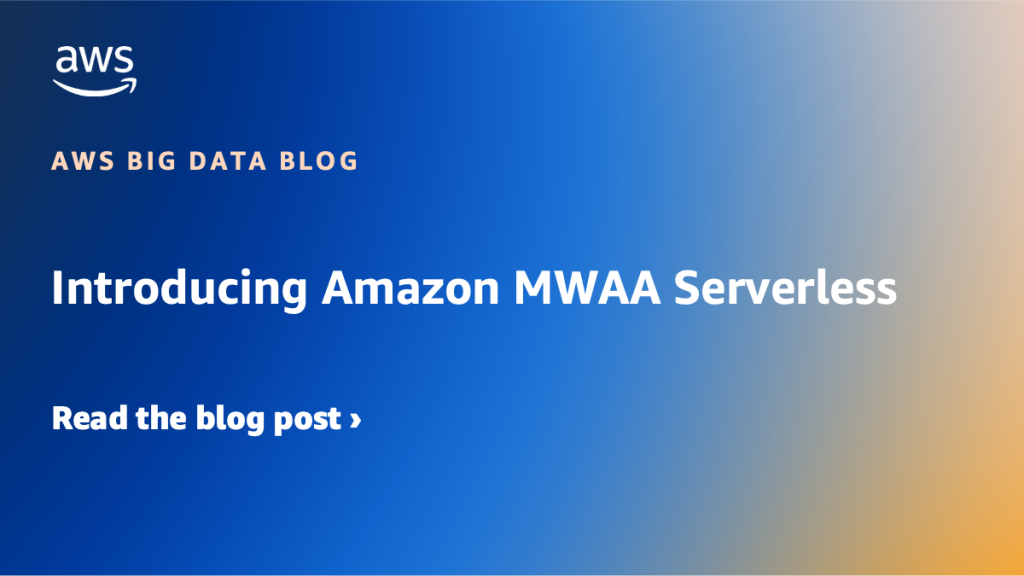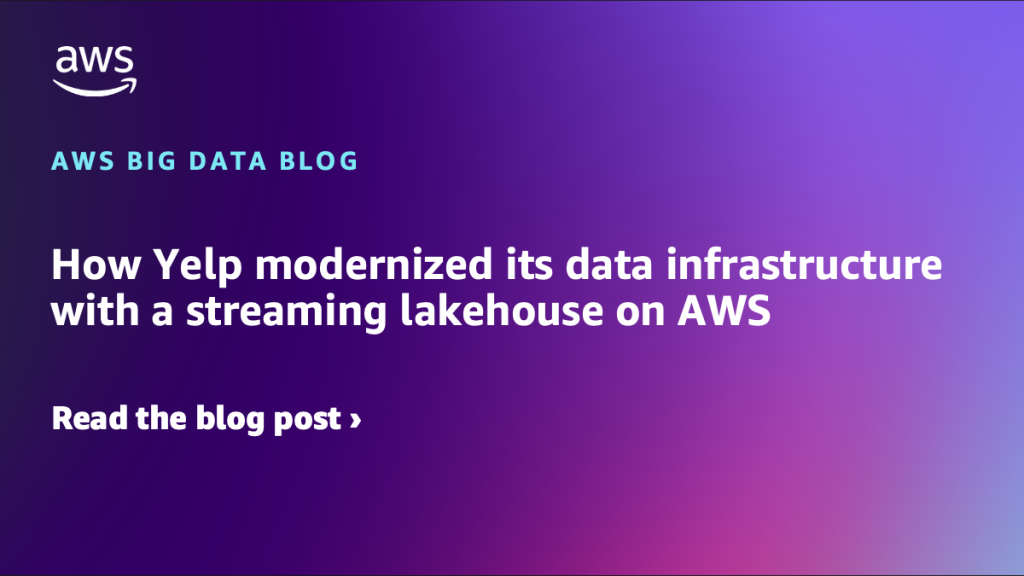AWS Big Data Blog
Orchestrating data processing tasks with a serverless visual workflow in Amazon SageMaker Unified Studio
In this post, we show how to use the new visual workflow experience in SageMaker Unified Studio IAM-based domains to orchestrate an end-to-end machine learning workflow. The workflow ingests weather data, applies transformations, and generates predictions—all through a single, intuitive interface, without writing any orchestration code.
Save up to 24% on Amazon Redshift Serverless compute costs with Reservations
In this post, you learn how Amazon Redshift Serverless Reservations can help you lower your data warehouse costs. We explore ways to determine the optimal number of RPUs to reserve, review example scenarios, and discuss important considerations when purchasing these reservations.
Introducing Cluster Insights: Unified monitoring dashboard for Amazon OpenSearch Service clusters
This blog will guide you through setting up and using Cluster Insights, including key features and metrics. By the conclusion, you’ll understand how to use Cluster insights to recognize and address performance and resiliency issues within your OpenSearch Service clusters.
Enforce business glossary classification rules in Amazon SageMaker Catalog
Amazon SageMaker Catalog now supports metadata enforcement rules for glossary terms classification (tagging) at the asset level. With this capability, administrators can require that assets include specific business terms or classifications. Data producers must apply required glossary terms or classifications before an asset can be published. In this post, we show how to enforce business glossary classification rules in SageMaker Catalog.
Enhanced data discovery in Amazon SageMaker Catalog with custom metadata forms and rich text documentation
Amazon SageMaker Catalog now supports custom metadata forms and rich text descriptions at the column level, extending existing curation capabilities for business names, descriptions, and glossary term classifications. Column-level context is essential for understanding and trusting data. This release helps organizations improve data discoverability, collaboration, and governance by letting metadata stewards document columns using structured and formatted information that aligns with internal standards. In this post, we show how to enhance data discovery in SageMaker Catalog with custom metadata forms and rich text documentation at the schema level.
Getting started with Amazon S3 Tables in Amazon SageMaker Unified Studio
In this post, you learn how to integrate SageMaker Unified Studio with S3 Tables and query your data using Amazon Athena, Amazon Redshift, or Apache Spark in EMR and AWS Glue.
Cross-account lakehouse governance with Amazon S3 Tables and SageMaker Catalog
In this post, we walk you through a practical solution for secure, efficient cross-account data sharing and analysis. You’ll learn how to set up cross-account access to S3 Tables using federated catalogs in Amazon SageMaker, perform unified queries across accounts with Amazon Athena in Amazon SageMaker Unified Studio, and implement fine-grained access controls at the column level using AWS Lake Formation.
Introducing Amazon MWAA Serverless
Today, AWS announced Amazon Managed Workflows for Apache Airflow (MWAA) Serverless. This is a new deployment option for MWAA that eliminates the operational overhead of managing Apache Airflow environments while optimizing costs through serverless scaling. In this post, we demonstrate how to use MWAA Serverless to build and deploy scalable workflow automation solutions.
Your guide to AWS Analytics at AWS re:Invent 2025
It’s that time of year again — AWS re:Invent is here! At re:Invent, bold ideas come to life. Get a front-row seat to hear inspiring stories from AWS experts, customers, and leaders as they explore today’s most impactful topics, from data analytics to AI. For all the data enthusiasts and professionals, we’ve curated a comprehensive […]
How Yelp modernized its data infrastructure with a streaming lakehouse on AWS
This is a guest post by Umesh Dangat, Senior Principal Engineer for Distributed Services and Systems at Yelp, and Toby Cole, Principle Engineer for Data Processing at Yelp, in partnership with AWS. Yelp processes massive amounts of user data daily—over 300 million business reviews, 100,000 photo uploads, and countless check-ins. Maintaining sub-minute data freshness with […]
